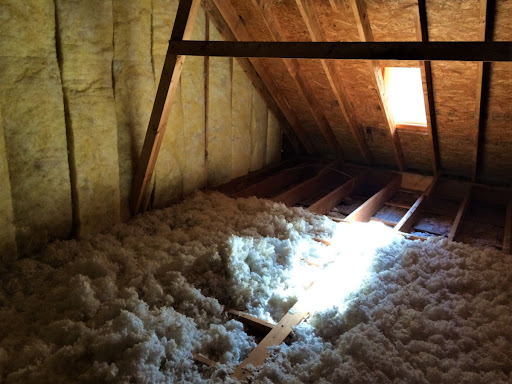
Understanding the Basics
Before we dive into the spray foam insulation vs. blown-in debate, let’s understand what these types of insulation are. Spray foam insulation involves spraying a polyurethane foam that expands and hardens, filling every nook and cranny. On the other hand, blown-in or loose-fill insulation involves blowing in insulation material, usually fiberglass or cellulose, into cavities and spaces.
Energy Efficiency: A Key Consideration
One of the primary reasons homeowners invest in insulation is to reduce their energy bills. When comparing blown-in insulation vs. spray foam in terms of energy efficiency, blown-in insulation takes the lead. It provides superior coverage, filling every space thoroughly, thus preventing heat loss and ensuring your heating and cooling insulation works efficiently.
Installation Process: Easier and Faster With Blown-In Insulation
Insulation installation can be a messy and time-consuming process. However, with specialized equipment, professionals can install blown-in insulation quickly and cleanly. The process involves blowing the insulation into walls, attics, and other spaces, filling them completely. This is less disruptive and faster than installing spray foam insulation, which requires more precision and can be more labor-intensive.
Safety: Fire Retardant Properties
Safety is another critical factor when considering the spray foam insulation vs. blown-in debate. Blown-in insulation typically consists of fire retardant properties, making it a safer insulation option. This means that in case of a fire, blown-in insulation is less likely to contribute to the spread of flames compared to spray foam.
Environmentally Friendly: Recycled Materials
What sets blown-in insulation apart from other types of insulation is the fact that it often consists of recycled materials, such as paper, glass, and plastic. This unique feature makes blown-in insulation a more eco-friendly option compared to its counterparts, which are typically made from synthetic or non-renewable resources.
Cost-Effective Insulation Option
When considering the cost, the blown-in insulation vs. spray foam comparison leans towards blown-in. While the upfront cost of spray foam might seem lower, the long-term savings from blown-in insulation make it a more cost-effective option.
Professional Insulation: Trust the Experts
Now that you’re aware of the benefits of blown-in insulation vs. spray foam, it’s time to trust the professionals. Adon serves residents in Anna, TX, and beyond, providing top-quality insulation services. As Owens Corning AirCare Professionals, we ensure your insulation is installed correctly, enhancing the energy efficiency of your home.
Schedule Your Blown-In Insulation Service Today!
It can be helpful to know the pros and cons of spray foam insulation vs. blown-in. However, taking prompt action to properly insulate your home is just as important. Are you ready to experience the benefits of blown-in insulation for your home? Contact Adon to schedule your service today! We also offer other services, including insulation in McKinney, TX, and the surrounding areas. Trust us to provide you with the best insulation option for your home, ensuring comfort, safety, and energy efficiency all year round.
How Does a Whole-House Dehumidifier Work? » « How to Find Air Duct Leaks






